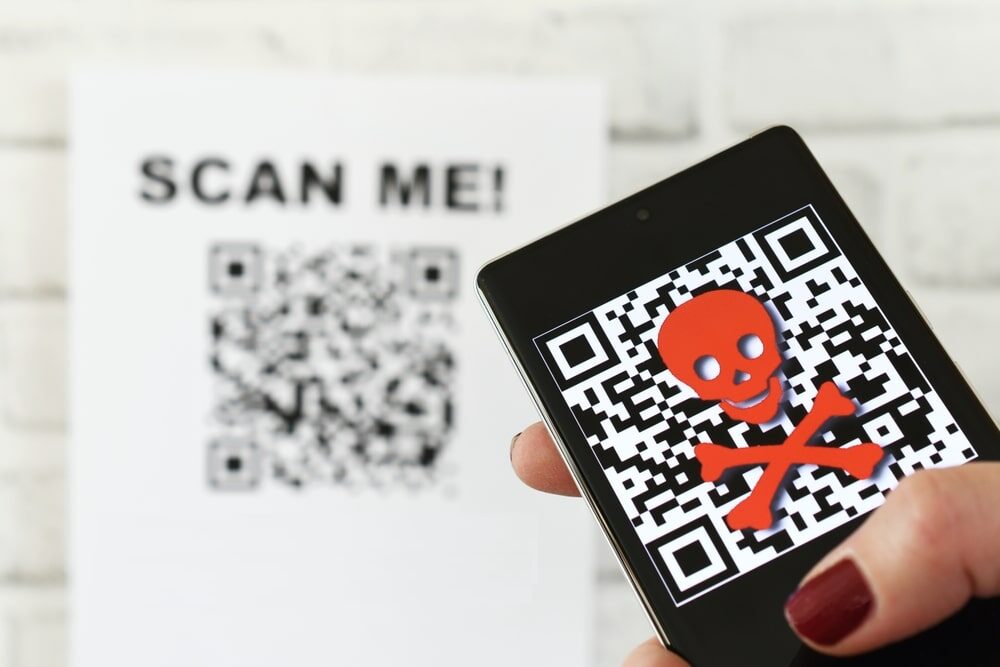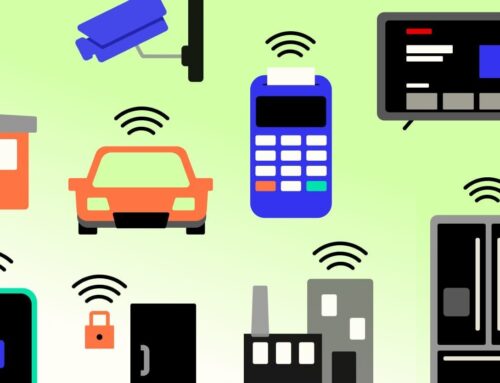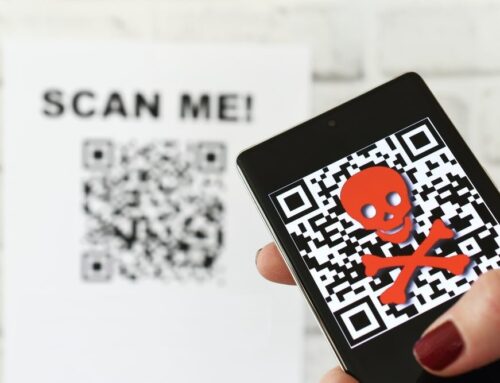Author: Nina Harley
QR codes have revolutionized the way we interact with digital content, offering a seamless bridge between the physical and digital worlds. Whether you’re paying for your morning coffee, accessing a website, or sharing contact information, QR codes are now a staple of everyday life. But behind their convenience lies a dark side—cybersecurity risks that could expose you to significant threats. This article delves into the hidden dangers of QR codes and provides practical strategies to mitigate these risks, ensuring you can enjoy their benefits without falling victim to cybercrime.
Understanding QR Codes
A QR (Quick Response) code is a two-dimensional barcode that stores information such as URLs, files, or text. Scanning a QR code with a smartphone or QR code reader instantly directs the user to the encoded data. Though their popularity is undeniable, QR codes also present significant security challenges. Since QR codes are not human-readable, they provide an ideal cover for cybercriminals seeking to exploit unsuspecting users.
Cybersecurity Risks Associated with QR Codes
QR codes are a gateway to convenience but also a potential entry point for cyberattacks. From phishing to malware distribution, here are some real-world risks posed by malicious QR codes:
-
Phishing Attacks (Quishing)
Risk: Cybercriminals embed malicious URLs within QR codes, directing users to phishing sites that steal personal information.
Case Study: In a high-profile banking scam, attackers placed malicious QR codes over legitimate ones, leading victims to fake bank websites. The unsuspecting users entered their login details, giving cybercriminals unauthorized access to their accounts. -
Malware Distribution
Risk: Scanning a malicious QR code can trigger an automatic download of malware, compromising your device.
Case Study: In a cryptocurrency scam, QR codes led users to sites that secretly downloaded malware, stealing wallet information and causing massive financial losses for the victims. -
Data Theft
Risk: QR codes can surreptitiously collect sensitive information, such as redirecting payments to fraudulent accounts.
Case Study: In a parking meter scam, fraudulent QR codes were placed on parking meters. Users believed they were paying for parking but were instead redirected to phishing websites that stole payment details. -
URL Obfuscation
Risk: QR codes hide URLs, making it impossible to identify malicious websites at a glance.
Case Study: In a romance scam, a scammer used a QR code to promote an “investment opportunity.” The victim scanned the code, leading to a fraudulent website where they transferred funds to the scammer’s wallet. -
Unauthorized Actions
Risk: QR codes can trigger unauthorized actions on websites where users are already logged in, such as changing settings or making purchases.
Case Study: In a government impostor scam, attackers impersonated utility companies and government agencies, using QR codes to convince victims to make fraudulent payments, which led to stolen personal and financial information. -
Cloning and Tampering
Risk: Attackers can replace legitimate QR codes with their own, leading users to harmful websites.
Case Study: Attackers tampered with QR codes on public signs and parking meters, redirecting users to phishing websites that harvested payment and personal information.
These case studies highlight the many ways malicious QR codes can harm individuals and organizations. Cybercriminals exploit these codes’ convenience and lack of human-readable content to trick users into compromising their security.
Regulatory Frameworks Governing QR Codes
To protect users and ensure secure handling of QR codes, various regulatory frameworks provide guidelines for compliance:
-
General Data Protection Regulation (GDPR)
The GDPR ensures data protection and privacy within the EU. Organizations using QR codes must: (a) Obtain explicit consent before collecting personal data, (b) Minimize data collection to only what is necessary, (c) Implement appropriate security measures to protect personal data, and (d) Be transparent about how data is used and stored.
Citation: European Union, “General Data Protection Regulation (GDPR),” Regulation (EU) 2016/679, 2016 -
Health Insurance Portability and Accountability Act (HIPAA)
HIPAA protects sensitive patient information in the U.S. Healthcare organizations using QR codes must: (a) Protect PHI (Protected Health Information), (b) Securely transmit patient data via QR codes using encryption, and (c) Conduct regular risk assessments to identify vulnerabilities.
Citation: U.S. Department of Health and Human Services, “Health Insurance Portability and Accountability Act of 1996 (HIPAA),” Public Law 104-191, 1996 -
Payment Card Industry Data Security Standard (PCI DSS)
Businesses using QR codes for payment processing must comply with PCI DSS, which ensures secure credit card transactions: (a) Secure payment links must be used, (b) Data must be encrypted to prevent unauthorized access, and (c) Regular monitoring and testing should be conducted.
Citation: PCI Security Standards Council, “Payment Card Industry Data Security Standard (PCI DSS),” Version 4.0, 2022 -
Federal Trade Commission (FTC) Guidelines
The FTC enforces consumer protection laws in the U.S. Businesses must: (a) Ensure QR codes in advertisements are truthful and non-deceptive and (b) Disclose privacy policies and provide opt-out options for data collection.
Citation: Federal Trade Commission, “FTC Guidelines for Online Advertising,” 2020 -
Industry-Specific Regulations
Banking and Finance: Must adhere to strict regulations for secure transactions via QR codes
Retail: Must protect customer data accessed via QR codes
Education: Must comply with laws like FERPA to protect student information.Citation: U.S. Department of Education, “Family Educational Rights and Privacy Act (FERPA),” 1974
Best Practices for Secure and Compliant QR Code Usage
To protect both users and organizations, it’s essential to adopt secure and compliant practices for using QR codes:
-
Educate Users & Raise Awareness
Users must understand the risks of malicious QR codes, including phishing, malware, and unauthorized data collection. Providing education on how to recognize suspicious codes can significantly reduce risks.
-
Verify Sources & Preview URLs
Only scan QR codes from trusted sources, and use tools that allow URL previews to identify potentially harmful links.
-
Use Secure Tools & Devices
Employ secure QR code generation and scanning tools that offer features like URL previews, encryption, and malware detection. Keep devices protected with up-to-date security software and enable regular software updates to patch vulnerabilities.
-
Implement Multi-Factor Authentication (MFA)
For sensitive actions triggered by QR codes, implement MFA to add an extra layer of security, especially for financial transactions or accessing personal accounts.
-
Change Default Credentials & Limit Device Permissions
IoT devices using QR codes should have their default credentials changed to strong, unique ones. Additionally, limit device permissions to reduce the attack surface.
-
Use Network Segmentation & Regular Software Updates
Segment networks to isolate IoT devices and minimize risks from compromised devices. Always ensure that software and firmware are regularly updated to protect against emerging vulnerabilities.
-
Look for Signs of Tampering
Be cautious of QR codes that appear altered or suspicious, as attackers may replace legitimate codes to trick users into visiting harmful sites.
By adhering to these best practices and ensuring compliance with relevant regulatory frameworks, organizations can safeguard against risks such as phishing, malware, and unauthorized access.
Conclusion
While QR codes offer undeniable convenience, they also introduce significant cybersecurity risks. Understanding these dangers and adopting effective mitigation strategies can help users and organizations harness the benefits of QR codes while protecting personal and sensitive data. Stay vigilant, stay informed, and safeguard your digital interactions with QR codes to ensure a safe and secure online experience.





